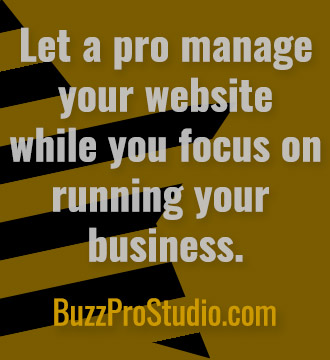Every small business needs a website, but how does a small business owner, who is not a website designer, go about planning a website or hiring a professional designer?
As you travel around the web, you’ll see that not all websites are created equally. Some are stunning in their aesthetic appeal. Others are impressive in the quality of their content. Many miss the mark because of stale, poorly planned designs or weak, ineffective content.
Many small business owners run out and get a website without any foresight or planning. I get requests for quotes almost every day from business owners who know they need a website but haven’t given it much thought.
Your small business website design will be instrumental in marketing your business. It’s not something you need to spend years on, but it’s also not something you just toss together like a salad. With careful, strategic planning, your small business website will come together nicely and then do an excellent job bringing customers to your business.
Here are five simple steps every small business owner can take toward getting an effective website built from the ground up.
Step One: Know Your Audience
The first rule of effective website design is to know your audience. That means you need to identify your target customers and then build a website that will resonate with them. Once you have defined the audience for your site, every future online marketing project from your website design to your Facebook page can be created with a clear, consistent purpose. Sites built for a targeted audience have a higher success rate. If you want your small business website design to attract customers, then make sure you build it for those customers, not for your designer, your industry, or even yourself.
Step Two: Content Development
Most web professionals agree that a site’s content should drive the design and not the other way around. Before you get started with your new small business website design, develop a comprehensive content plan. Here are some questions to consider during the content development phase:
- Do you already have a logo? If not, you might want to get one before you start on your website design.
- What will be on your home page? Will it be image-driven or text-driven? The most effective home pages serve as an introduction to a site’s content.
- How many pages will the site have? Make sure you include the essentials: home, about, products/services, and contact.
- Will the site include a blog? Articles? Videos?
- How often will the site be updated or changed? Should you get a site that you can update yourself? If you don’t make your own updates, you might want to hire a website manager to handle it for you. Also, remember that the more frequently you update your site, the better your search engine rank will be.
Step Three: Image and Branding
Your site should reflect your company image. Are you sleek and professional? Warm and friendly? Cutting edge? Your image is an essential part of your brand, and it should be reflected in everything that relates to your website and your company — from press releases to advertisements.
One of the most essential branding components is your logo. If you don’t have one, your website designer may be able to create one for you as part of your design package, or you might need to hire a professional graphic artist to create your logo. Your logo should appear on your business cards, website, ads, and all other materials that you share, publish, or distribute.
If you start with a logo and company image or tone, you’ll already have the foundation in place for your small business website design. Design solutions come quickly and easily and work best when a well-planned brand is already in place.
Step Four: Products and Services
There is nothing more frustrating than a website with an unclear purpose. When customers come to your site, they should easily be able to determine what, exactly, you offer. But many sites fail in this area. They stuff the site full of industry jargon that a customer can’t possibly relate to and fail to include any information about how transactions work. Customers who are confused are not likely to buy. Use layman’s terms to describe your offer (not industry language), and be clear about how customers can place orders or hire you.
Step Five: Finally, Bring in the Designer
If you’re not comfortable with the first four steps, you can always skip to this one and look for a designer who can walk you through the planning process and lend expert advice on how to build a site that appeals to your customers.
Here are a few tips for finding a website designer:
-
- Find a designer whose style you like. Be sure to check their portfolio to see the work they’ve done, but refer to the designer’s own website as the standard bearer of their capabilities.
- Let the designer know up front what kind of budget you’re working with. There’s no sense wasting time with a designer who is out of your price range (website design rates run the gamut from a couple hundred to several thousand dollars).
- Let the designer know if your site will require any special features or functionality like e-commerce checkouts, which adds considerable complexity to design, content, and code.
- Understand the designer’s job. A designer is not a copywriter, website manager, or graphic artist. If you need these other services, let the designer know so he or she understands how many people will be involved in the project, or look for a design firm that offers all of these services.
- Find a designer you like to work with. There’s a good chance you and your website designer will have a long-term business relationship.
- Get some ideas together before you approach a designer. Find a few websites with designs you like and show these to your designer so they understand your style and taste preferences.
In these times, a well-built small business website is critical to success. Whether you’re starting a brand new design or revamping an existing one, don’t rush. Take the time to plan carefully so you save time and money and get it done right the first time.
Buzz Pro Studio provides website services to small businesses and independent professionals, specializing in website design and maintenance. For more information or to get a no-obligation quote, contact me.
Melissa Donovan is the founder of Buzz Pro Studio, providing website services to small businesses and independent professionals.


